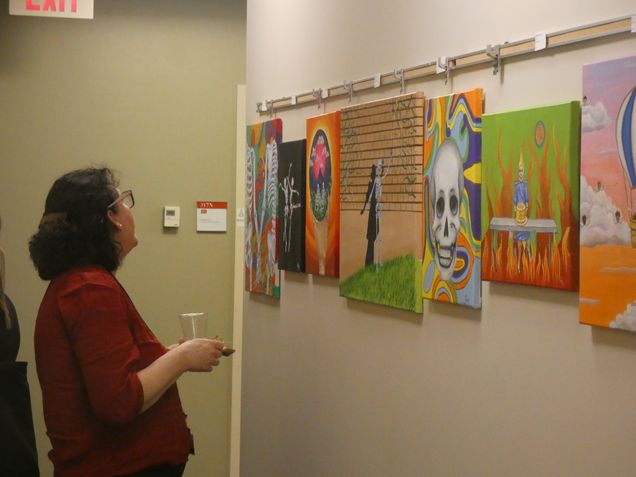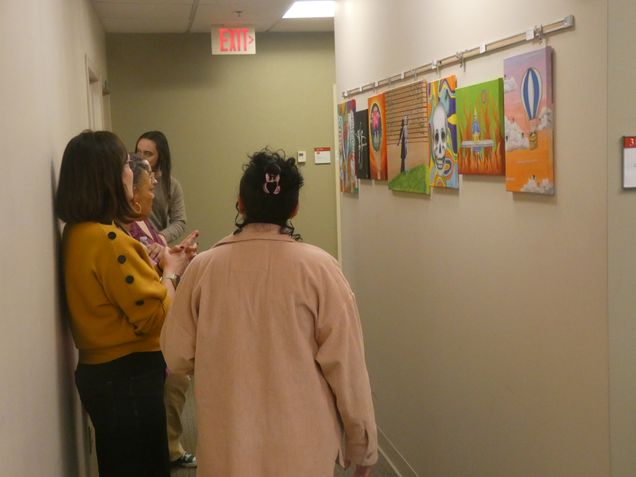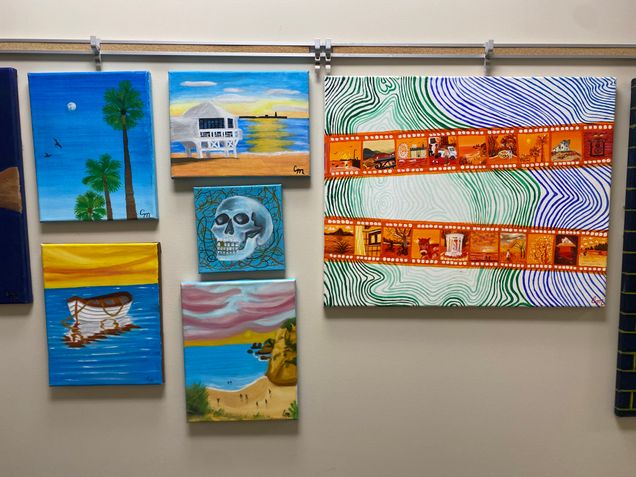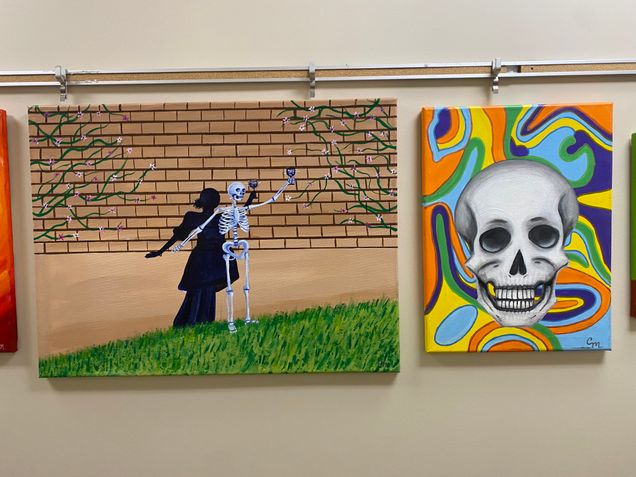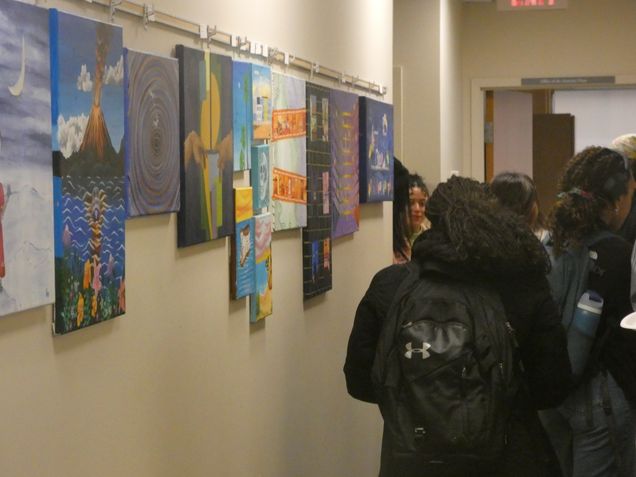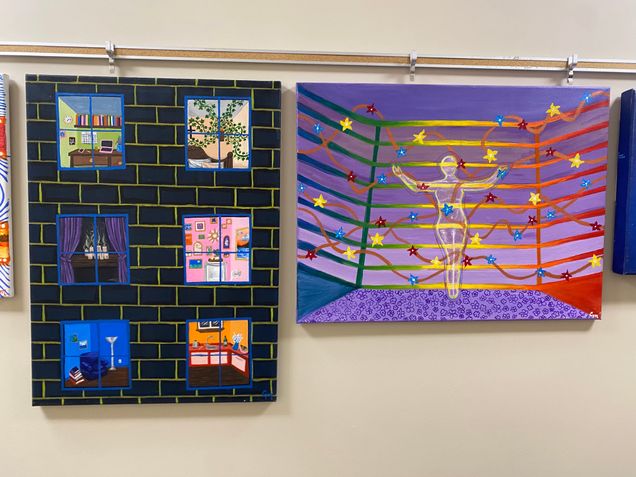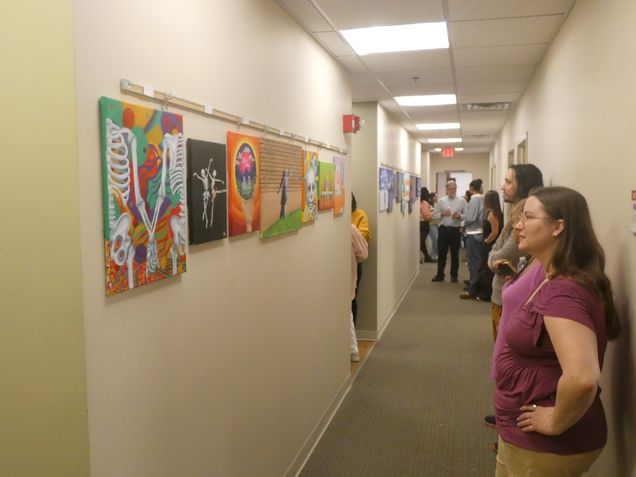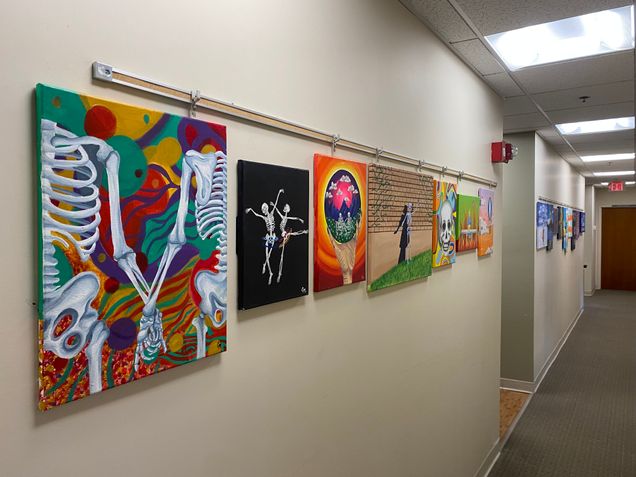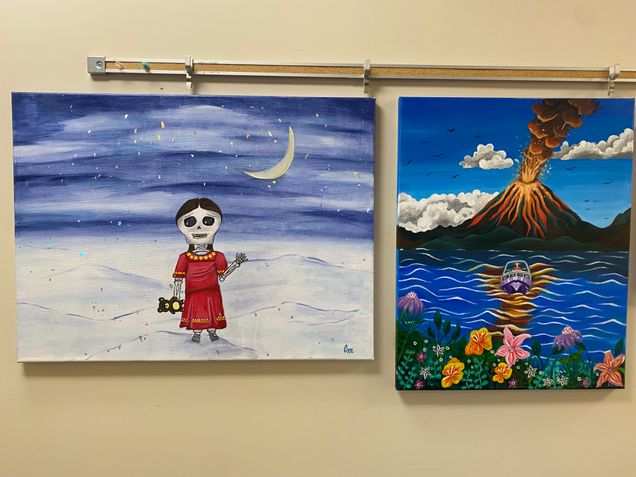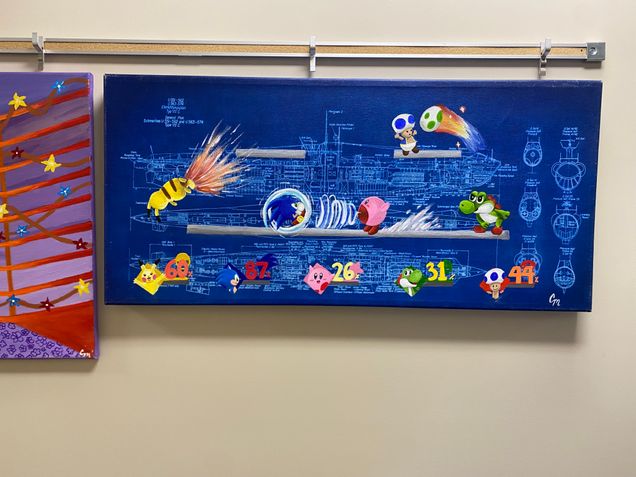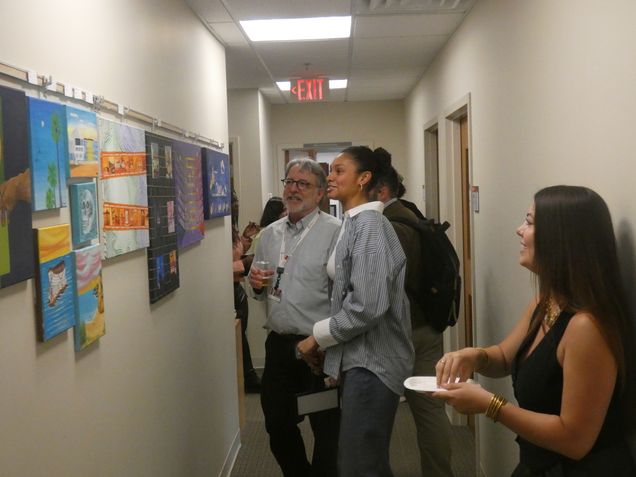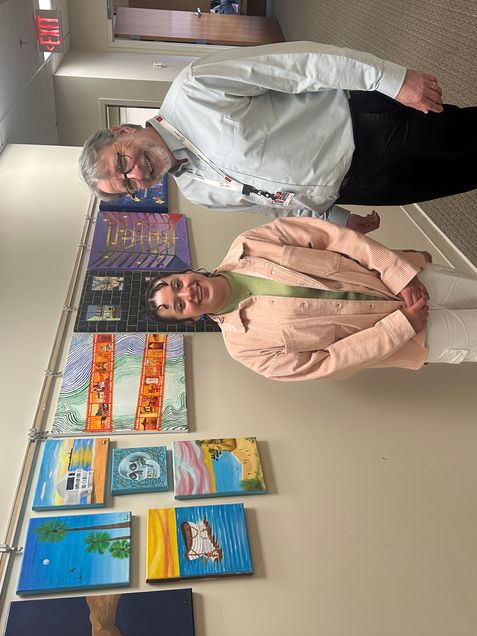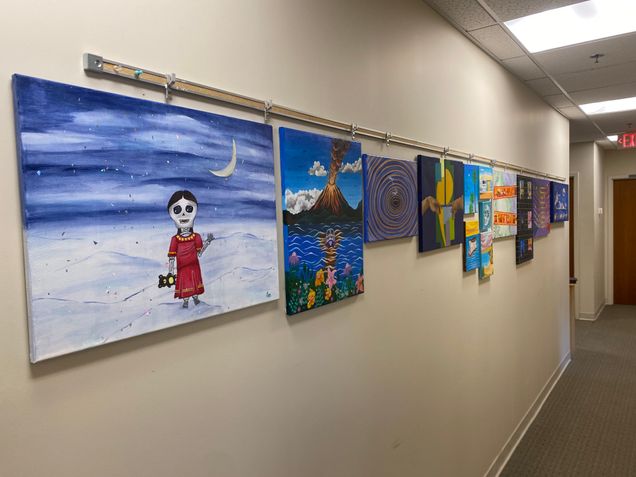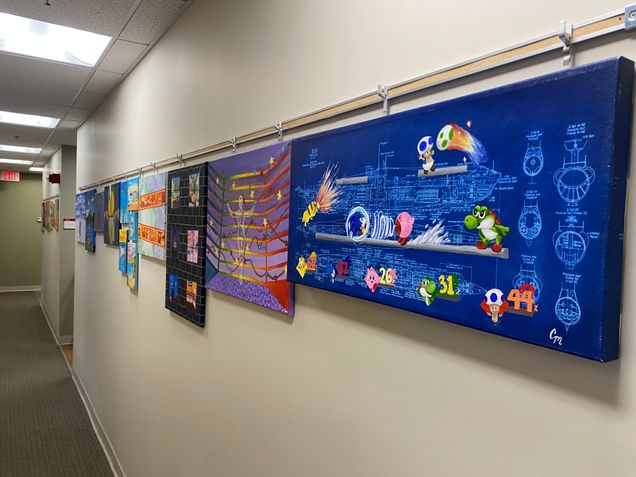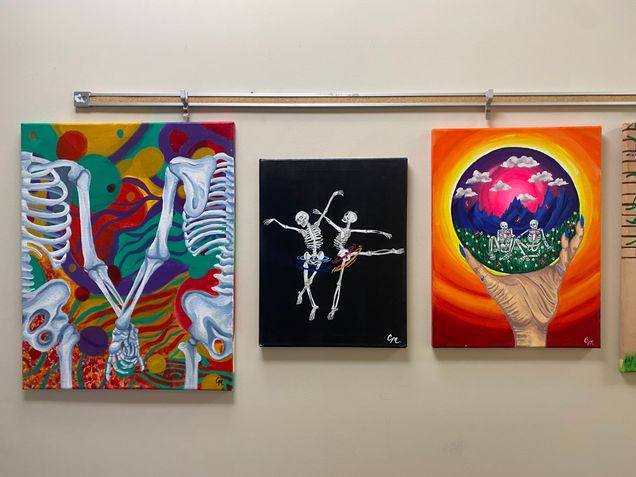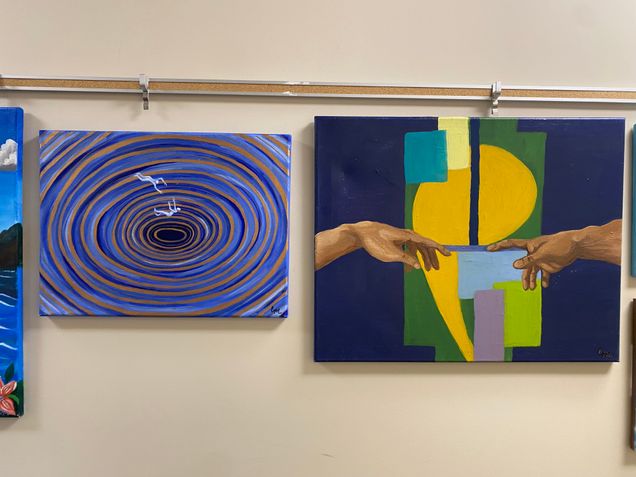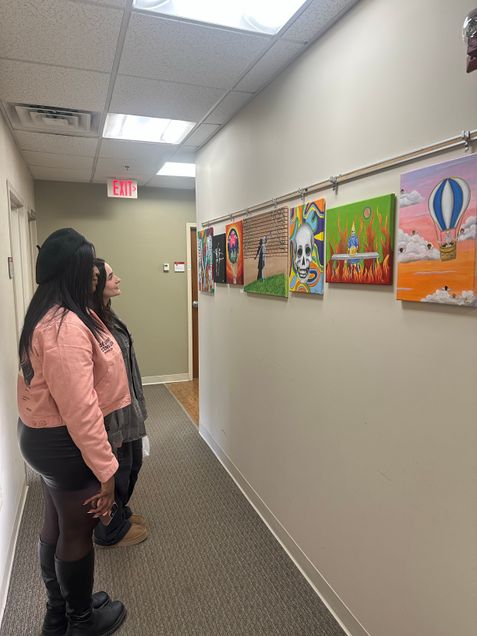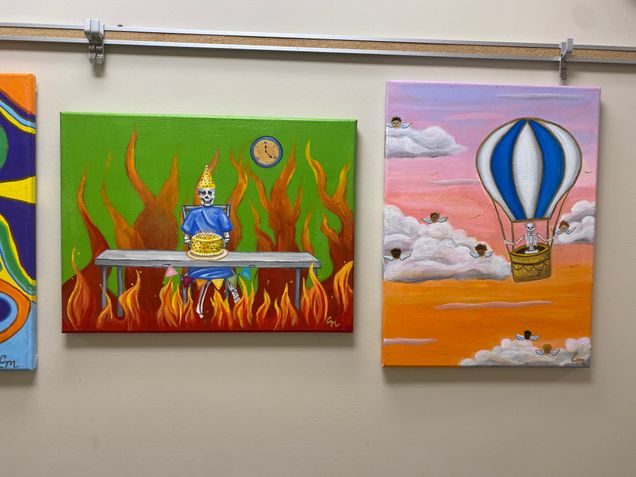Student Spotlight: Cynthia Ordoñez Salguero (MHCBM ’25)
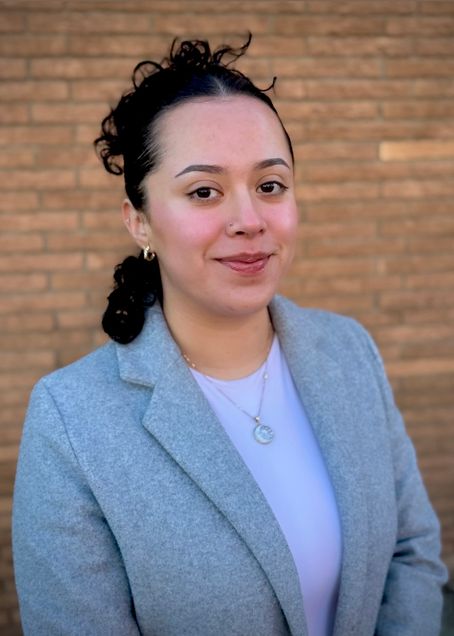
Cynthia Ordoñez Salguero is a second-year student in the Master of Arts in Mental Health Counseling & Behavioral Medicine program at Graduate Medical Sciences. She is currently completing an internship as an Integrated Behavioral Health Clinician in the Pediatric and Adolescent Clinic at Boston Medical Center. Cynthia is also an artist whose paintings explore the balance between grief and joy. Cynthia’s artwork will be on display in the GMS Suite (L-317) through April 30, and you can read her full artistic bio by clicking here. We spoke to Cynthia about her journey to Boston University, her art, and her goals in the field of mental health counseling. Check out a slideshow of Cynthia’s artwork and read our full interview below!
GMS recently hosted an exhibition opening for Cynthia’s artwork in the L-317 Suite. Her work will be on display through April 30, 2025.
Tell me about your journey to Boston University. What is your educational and professional background leading up to joining the Mental Health Counseling & Behavioral Medicine Program?
I went to the University of Massachusetts Amherst for my undergrad and got my BA in Psychology. During my last semester of undergrad, I was a part of a study away program in Boston called College for Social Innovation, where I was introduced to the nonprofit sector and fell in love with mission-oriented work serving marginalized communities. I love working toward something I believe in – a cause that is greater than me. After my undergraduate journey, I went into the non-profit field. I completed a service year as an AmeriCorps VISTA, working to alleviate poverty by building the capacity of nonprofit organizations. I held a couple of different roles in marketing and as a program and operations coordinator. This experience taught me the importance of critically thinking about systems to provide sustainable solutions.
During this time, I continued to explore what profession I wanted to dedicate my life to. I knew the following to be true: I enjoy listening to other people’s stories, I love helping others, and I have a lot of patience. After deciding to be a therapist, I applied to the Mental Health Counseling & Behavioral Medicine program. Given the unique focus on behavioral medicine and psychopharmacy and being CACREP [Council for Accreditation of Counseling and Related Educational Programs] accredited, I believe it was the best fit.
What drew you to the Mental Health Counseling & Behavioral Medicine Program?
I really appreciate how the program emphasizes multicultural competencies and respecting individual’s identities. I think that the program does a really good job of emphasizing the importance of honoring people’s cultures, as well as challenging me to reflect on how my identities and how they come up in the therapeutic space.
Did you always know that you wanted to do something in mental health counseling?
I had no idea what I wanted to do growing up. However, I was always attracted to psychology. I love understanding how humans function. I love processing moments and events with people. I love helping others. I am someone who is constantly working on myself. That’s my favorite quality in a person: the drive to grow and learn.
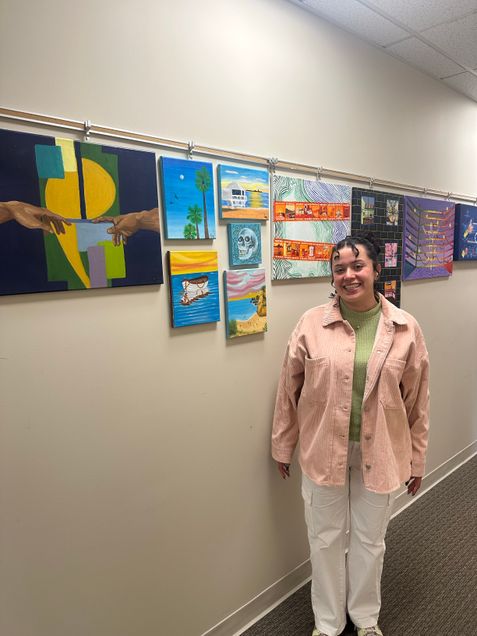
Please tell me a bit about your journey as an artist.
Growing up, I was praised for my “above average” artistic skills, but I did not seriously pursue art. One day during undergrad, I went to a paint-and-sip event and painted what I believed was the ugliest sunset ever. Similarly, people kept reinforcing this belief that I was good at art. I remember enjoying the process of painting and how much it improved my mood. Afterward, I would just paint images I would find on Pinterest in my room. Jessica Prodoehl and Roula Sparagis, former Resident Directors at UMass Amherst, bought my paintings and would encourage me to continue practicing. I graduated in December 2019, right before COVID happened, so I had a lot of free time on my hands post-graduation.
During this time, I just painted my little heart away and began to find my style. I started painting more expression pieces and challenging myself. My friends and I would give each other prompts, such as “Paint something and only use these colors,” or “paint this mood.” I was still too shy to call myself an artist and would proclaim to others that this was just a hobby. I began to find my voice and share my art with others, and things grew from there. A lot of my paintings are centered around themes of grief. I like to balance really sad and happy things. I like to depict this balance that you can be both. I paint on everything!
How do you balance classwork, clinical work, and wellbeing in graduate school? Is art a good outlet for that?
Art is a good outlet for that. I’m someone who will paint on anything and everything. I’ve painted on bags, shoes, and clothing. I can’t do all of that [right now] because it requires a lot of time, but I will paint one or two hours per day every once in a while. I think that, especially as a therapist, it’s easy to accumulate a lot of residual emotions that other people carry. I am constantly looking for outlets to release a lot of that. It can so easily be overwhelming, and I think painting is one thing that helps me let go and not hold on to all the things that come up.
Can you tell me about some of the work you’re doing as part of the MHCBM program?
My internship is at Boston Medical Center as an Integrated Behavioral Health Clinician in the Pediatric and Adolescent Clinic. It’s a relatively new form of therapy, created to increase access to mental health care in an integrated setting working on a multidisciplinary team. Primary Care Clinics are where people frequently go, therefore it’s easier to connect with patients and provide resources through this setting. We do a lot of “warm hand-offs.” I’m sure you’ve been to the doctor recently and have taken their depression or anxiety screening tests. If you have a high score, a warm handoff means that a mental health counselor or a social worker will come in to talk to you about it. They will assess what is going on and provide you with resources at that moment, schedule you with them, or provide referrals.
I see a lot of kids and adolescents and do short-term targeted therapy. We’ll work on one or two goals. Once those goals are completed, they get to decide on what to do next, whether that’s going to a different form of therapy or being done with therapy. It’s a way to increase access to mental health and a way to have more of a preventative care model. A lot of people go to therapy when they’re at their lowest, and that makes sense. But it’s also really nice to catch it when you’re at a different level of functioning.
Long term, I’m leaning more toward working in outpatient and private practice. I love the idea of being able to create my own business in a role where I can serve others.
Are there specific mentors who have helped you get to this point?
Jessica Prodoehl and Roula Sparagis are my former Resident Directors at UMass Amherst. Both of them believed in me and poured in me during moments when I didn’t believe in myself as a young professional and also an artist. They were the first people to purchase my art. They made a huge difference in my undergraduate experience and the trajectory of my life. Vicky Ajene also saw a lot of value in me and believed in my natural talents. She helped foster my growth professionally and artistically. She also gives amazing advice when I need it.
Tasha Berroa, LICSW, is my current supervisor at my internship site. She models how to meet clients where they’re at and slows down the work to attune to clients. I also want to shout out Sasha Brown, LICSW, and Shaikhah Alhomaizi, LCSW, and Camille Clausen, LCSW who have been a huge support in orienting me and guiding me as I continue to learn and strengthen my skills. They have modeled the most valuable thing to me, which is how to be authentically themselves while being competent therapists.
What advice would you give to a future GMS student following a similar path?
Don’t be afraid to be yourself. Every position that I’ve ever had where I was myself, granted, if the environment was safe enough to be myself, I’ve always gotten feedback that I’ve provided something useful and new to that environment. I think that in my program, I am very much myself. I think that is very valued, and I feel that from my professors and my peers. It always feels good to have people value, appreciate, and respect you for who you are. That to me, is who I want to embody. I think it is easy to try to conform in an academic space. I think there is a lot of value in being yourself, however that looks like for you, and not having to conform too much. It’s okay not to look perfect, because you’re a student and you’re learning.
